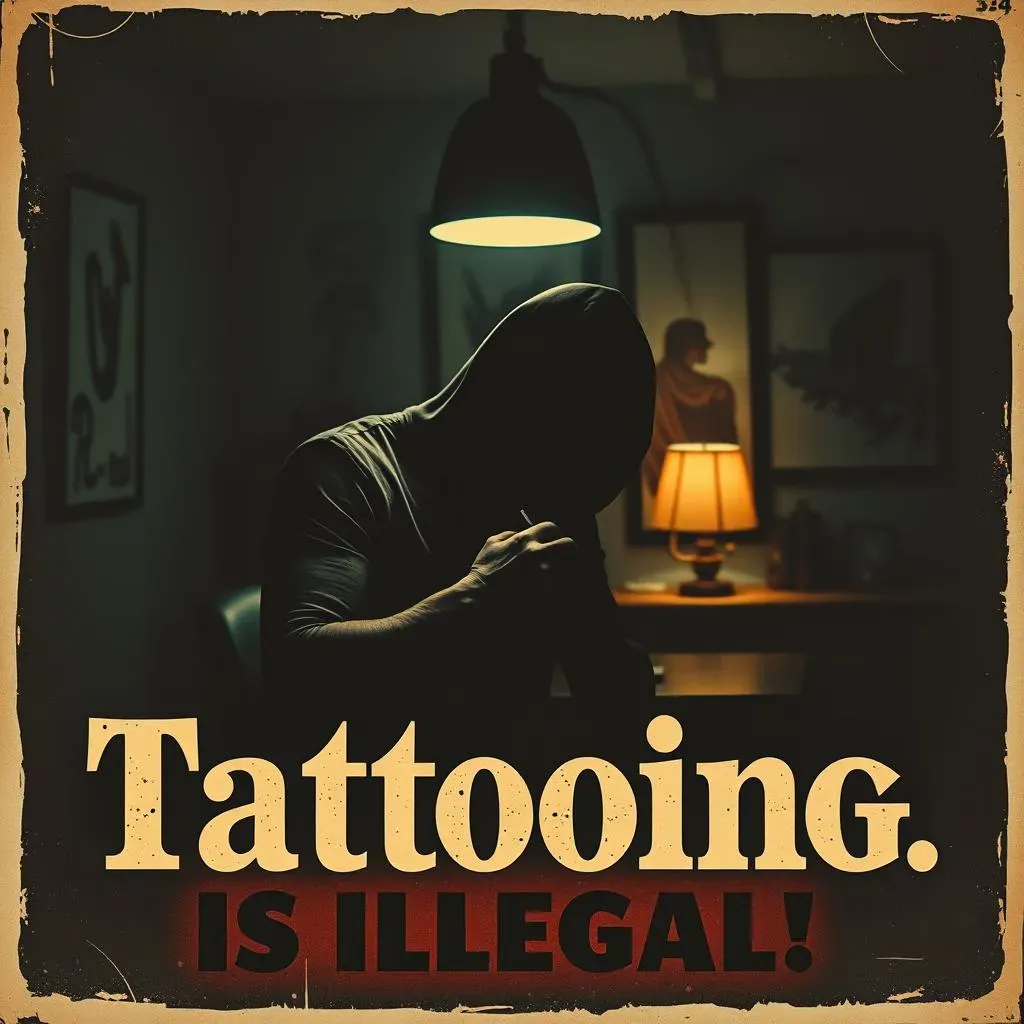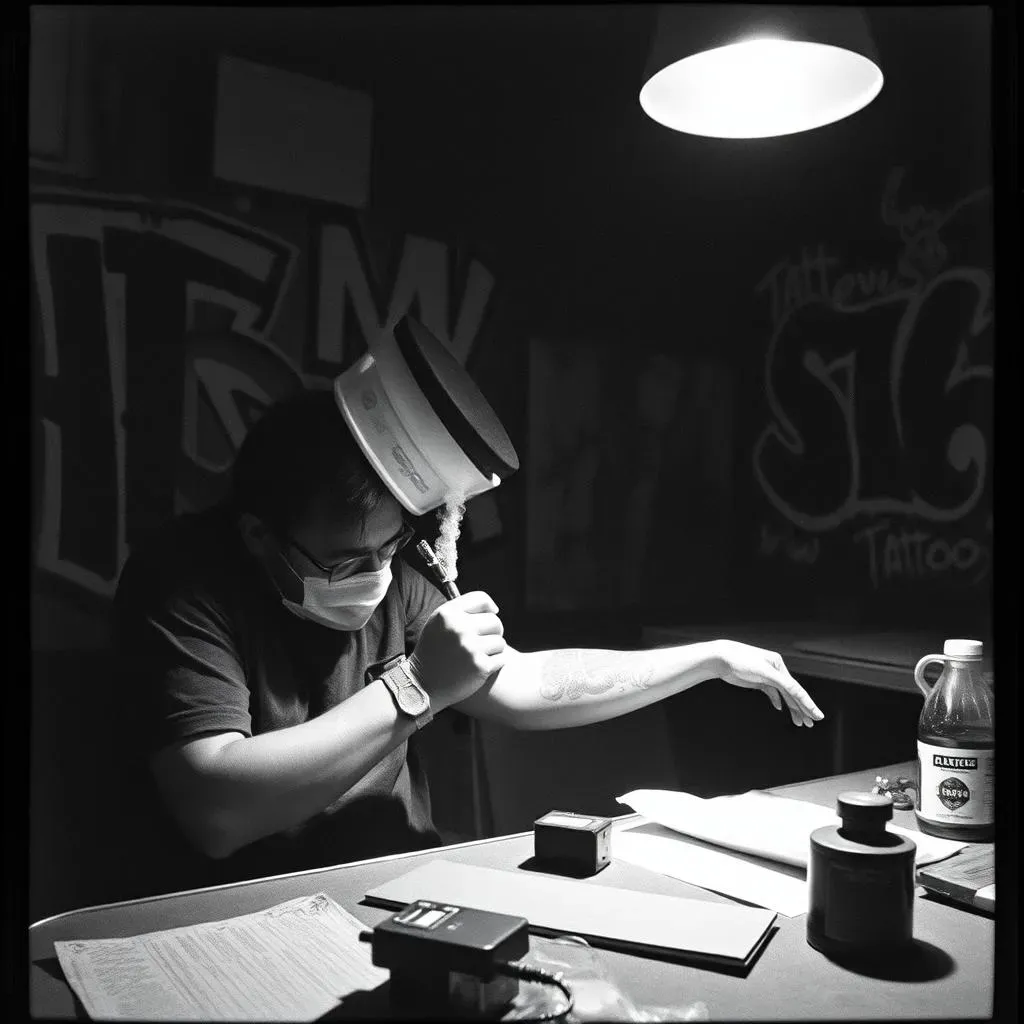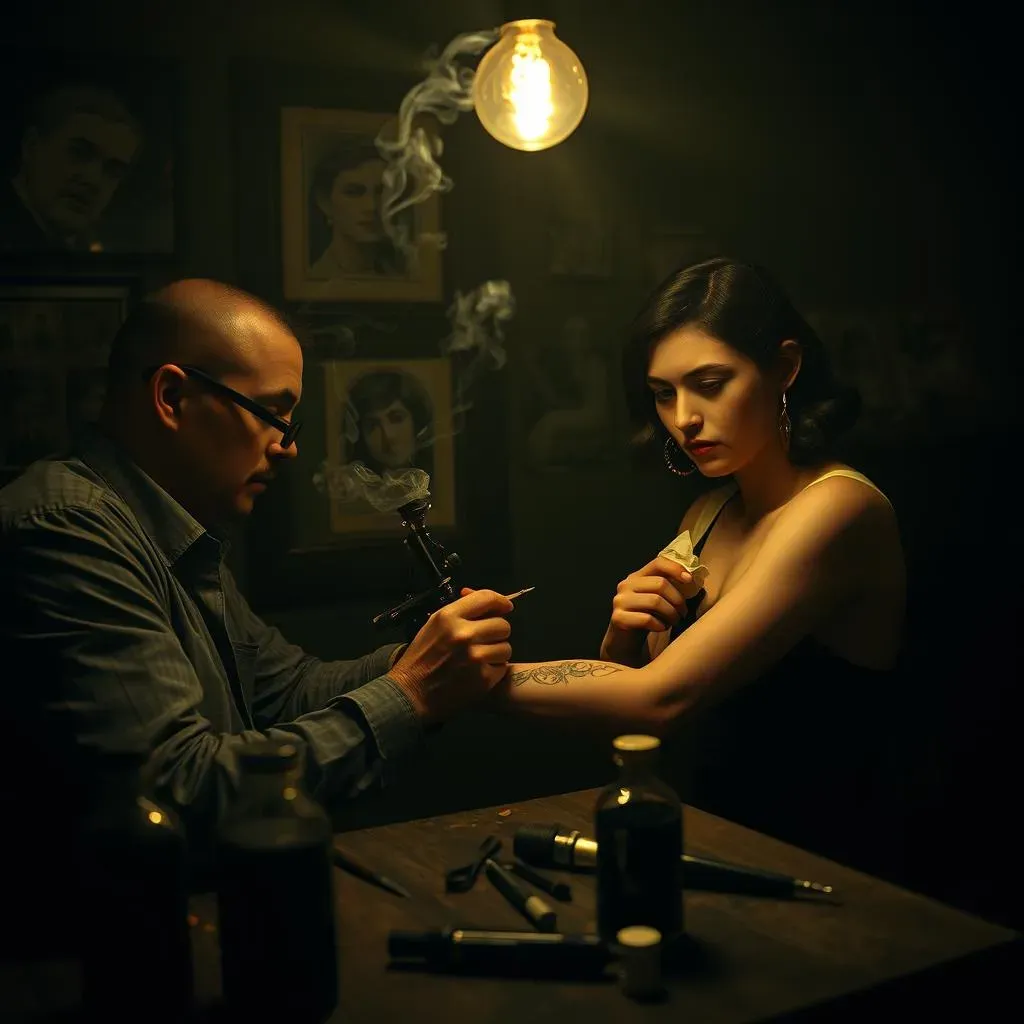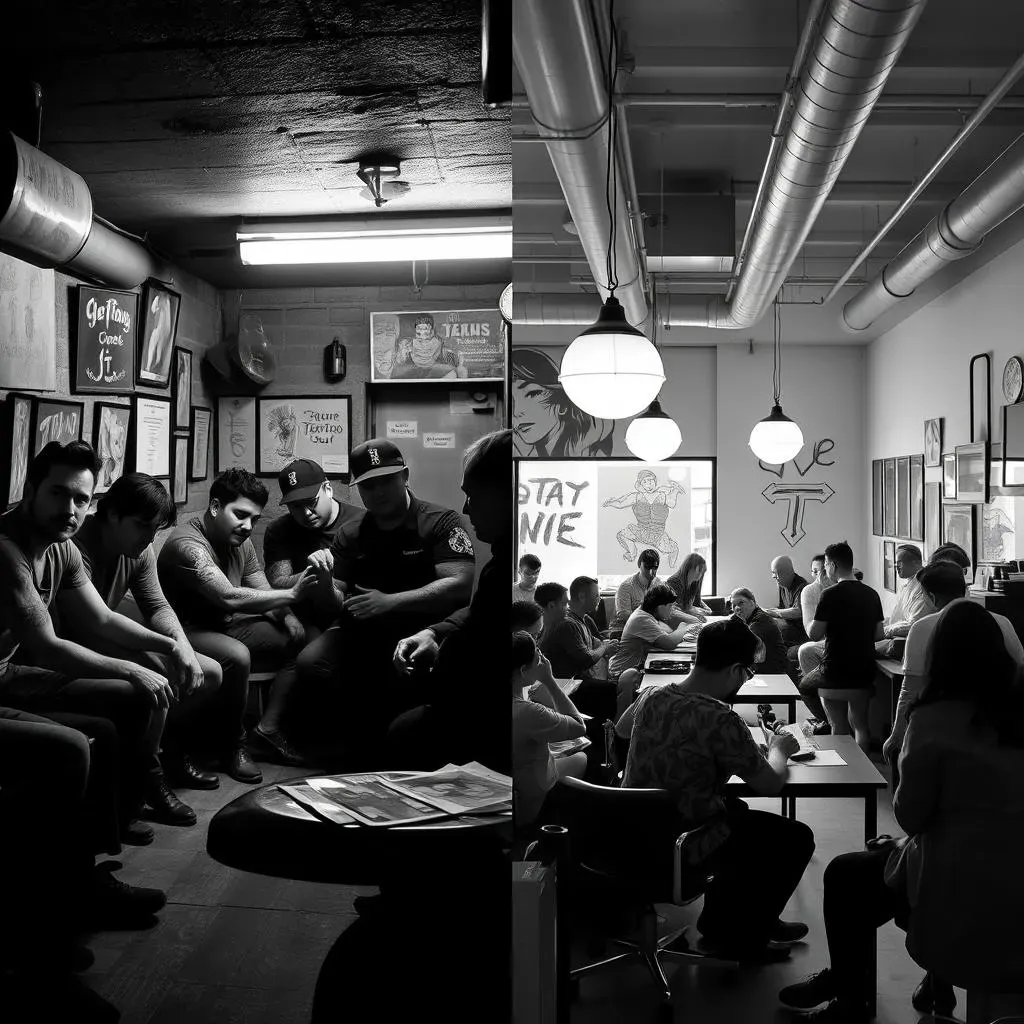Table of Contents
Thinking about getting inked? It's hard to imagine a world where tattoos weren't the norm. These days, tattoo parlors dot cityscapes, and body art is a widely accepted form of self-expression. But rewind a few decades, and you might be surprised to learn that "did tattoos used to be illegal" is a question with a fascinating answer. For years, in some corners of the United States, getting a tattoo meant stepping into the shadows. New York City, a hub of culture and innovation, banned tattooing for nearly four decades. Why? What drove this decision, and how did tattoo artists and enthusiasts navigate this period of prohibition? Prepare to uncover the captivating story of tattooing's journey from underground subculture to mainstream phenomenon. We'll explore the reasons behind the ban, the defiant artists who kept the ink flowing, and the eventual resurgence that brought tattoos into the light. Get ready to dive into the intriguing history of when tattoos were illegal.
The Shocking History: When Tattoos Were Illegal
The Shocking History: When Tattoos Were Illegal
Believe it or not, there was a time when getting a tattoo could land you on the wrong side of the law. It's wild to think about now, with tattoo culture so ingrained in modern society, but several places outlawed tattooing for different periods. The reasons behind these bans are varied, often stemming from concerns about public health and safety. Some officials worried about the spread of diseases like hepatitis through unhygienic tattooing practices. Others viewed tattoos as a sign of rebellion or association with undesirable elements of society. Whatever the reasoning, these bans had a significant impact on the tattoo industry, pushing it underground and shaping its evolution.
Take New York City, for example. From 1961 to 1997, tattooing was officially illegal. This wasn't some backwater town we're talking about; it was NYC, a global trendsetter! The ban came about due to a hepatitis B outbreak, which was falsely linked to tattoo parlors. This led to a knee-jerk reaction, and tattooing was swiftly outlawed. For over three decades, those who wanted to get inked had to seek out underground artists, often operating in less-than-ideal conditions. This era fostered a sense of secrecy and rebellion around tattooing, adding to its allure for some.
City/State | Years Illegal | Reason |
|---|---|---|
New York City | 1961-1997 | Hepatitis B scare (later debunked) |
Massachusetts | 1962-2000 | Similar health concerns |
NYC's Tattoo Blackout: Four Decades of Ink Prohibition
NYC's Tattoo Blackout: Four Decades of Ink Prohibition
Picture this: it's the 1970s in New York City. The Ramones are blasting from CBGB, graffiti art is exploding across subway cars, and…getting a tattoo is a clandestine affair. During "NYC's Tattoo Blackout," which lasted from 1961 to 1997, the city was a strange paradox: a haven for artistic expression where one particular art form was outlawed. This prohibition wasn't just a minor inconvenience; it fundamentally shaped the city's tattoo scene. It forced artists underground, creating a culture of secrecy and a network of hidden studios. Imagine the stories those walls could tell!
The ban wasn't about aesthetics; it was supposedly about health. A hepatitis B outbreak led officials to believe that tattoo parlors were a hotbed for disease transmission. This link was later debunked, but the damage was done. The ban stayed in place for over three decades, impacting generations of artists and tattoo enthusiasts. Think about the dedication it took to pursue tattooing as a career during this time. These artists weren't in it for the money or the fame; they were driven by a genuine passion for the art form.
What does it mean to have an artistic expression criminalized? It's a question of freedom, of course, but it's also about the evolution of culture. The ban didn't erase the desire for tattoos; it simply pushed it into the shadows, where it festered and evolved in unique ways. The underground scene became a breeding ground for innovation, with artists experimenting with new techniques and styles, often out of necessity. It was a time of risk, creativity, and a shared sense of defiance against the establishment. The tattoo artists of NYC during this era weren’t just artists, they were rebels!
Underground Ink: Tattooing's Defiant Rise During the Ban
Underground Ink: Tattooing's Defiant Rise During the Ban
The Speakeasies of Skin Art
Imagine a world where tattoo parlors operated like speakeasies during Prohibition. That's precisely what the scene was like when tattoos were illegal. Artists worked in hidden studios, often in apartments or basements, relying on word-of-mouth referrals. These weren't your brightly lit, sterile shops of today. These were intimate, secretive spaces where the art of tattooing thrived in the shadows. Each session felt like a rebellious act, a small defiance against the authorities.
This clandestine environment fostered a unique sense of community. Clients weren't just customers; they were part of an exclusive club, connected by their shared desire for body art and their willingness to break the rules. The artists, in turn, became guardians of this underground culture, protecting their craft and their clients from unwanted attention. It was a risky business, but the passion for tattooing kept them going.
Innovation in the Shadows
Necessity is the mother of invention, and the tattoo ban was no exception. Underground artists had to be resourceful, improvising with limited resources and adapting their techniques to the constraints of their environment. This led to some innovative approaches to tattooing. Some artists built their own machines, modifying existing tools or creating entirely new designs. Others experimented with different inks and pigments, searching for vibrant colors that wouldn't fade or cause allergic reactions.
The lack of regulation also meant that artists had more freedom to experiment with different styles and designs. They weren't bound by the conventions of the mainstream tattoo industry. The underground scene became a melting pot of ideas, with artists drawing inspiration from various sources, from traditional tribal art to punk rock aesthetics. This experimentation helped to shape the evolution of tattooing, paving the way for the diverse styles we see today.
The Risk and the Reward
Operating an illegal tattoo studio came with significant risks. Artists faced the threat of arrest, fines, and the confiscation of their equipment. Clients, too, risked being caught and facing legal consequences. Despite these dangers, people continued to seek out underground tattoo artists, drawn by the allure of the forbidden and the unique experience of getting inked in the shadows.
For many, the risk was part of the appeal. Getting a tattoo during the ban was a statement of rebellion, a way of expressing individuality in a society that often frowned upon nonconformity. It was a way of connecting with a community of like-minded individuals who shared a passion for body art and a willingness to challenge the status quo. The reward was not just the tattoo itself, but the sense of belonging and the thrill of defying the rules.
Risk | Reward |
|---|---|
Arrest and fines | Unique tattoo experience |
Confiscation of equipment | Sense of rebellion |
Health risks (unregulated conditions) | Connection to underground culture |
From Illegal to InDemand: How Tattoos Became Mainstream
From Illegal to InDemand: How Tattoos Became Mainstream
So, how did tattoos go from being a forbidden art form practiced in dingy basements to a mainstream phenomenon embraced by everyone from celebrities to soccer moms? It wasn't an overnight transformation, but a gradual shift influenced by several factors. One key element was the changing perception of tattoos in popular culture. As tattoos began to appear more frequently in movies, music videos, and magazines, they became less associated with rebellion and more with self-expression and personal style. Celebrities sporting ink played a massive role in normalizing tattoos, making them seem cool and desirable to a wider audience. Think about it, when your favorite rockstar or actress proudly displays their tattoos, it sends a message that body art is acceptable, even fashionable.
Another important factor was the increasing regulation and professionalization of the tattoo industry. As the demand for tattoos grew, so did the need for safer and more hygienic practices. Tattoo shops began working closely with health departments to implement stricter standards for sterilization, sanitation, and artist training. This helped to dispel the perception that tattoo parlors were dirty and dangerous, making them more appealing to a broader range of clients. The rise of talented and professional tattoo artists also contributed to the industry's growing credibility. These artists weren't just skilled technicians; they were true artists, creating intricate and beautiful designs that rivaled traditional art forms.
The lifting of tattoo bans in cities like New York City and Massachusetts also played a crucial role in the mainstreaming of tattoos. With tattooing no longer illegal, tattoo shops could operate openly and without fear of reprisal. This led to a surge in the number of tattoo parlors, making it easier for people to get inked. The commercial acceptance of tattoos further solidified their place in mainstream culture. Brands began incorporating tattoos into their advertising campaigns, and tattoo-inspired designs started appearing on clothing and accessories. It seemed like everywhere you looked, tattoos were becoming more visible and more accepted.
Factor | Impact on Mainstreaming |
|---|---|
Celebrity Influence | Normalized tattoos, made them desirable |
Regulation and Professionalization | Improved safety, increased credibility |
Lifting of Bans | Allowed legal operation, increased accessibility |
Commercial Acceptance | Integrated tattoos into mainstream marketing |
Today, tattoos are more popular than ever before. According to a Harris poll, one in three adults in America has a tattoo. Tattoo conventions draw huge crowds, and tattoo-themed reality shows are a hit on television. The stigma surrounding tattoos has largely faded, replaced by a growing appreciation for body art as a form of self-expression. From illegal to in-demand, the journey of tattoos has been a long and fascinating one, reflecting changing attitudes towards art, culture, and the human body.
Conclusion: From Outlawed to Outstanding
The journey of tattoos from forbidden art to mainstream expression is a testament to changing societal norms and the enduring human desire for self-expression. The days when "did tattoos used to be illegal" was a stark reality seem distant now, thanks to the dedicated artists who kept the culture alive and the evolving perceptions of beauty and identity. Today, tattoos are not just accepted; they are celebrated as personal stories etched onto skin, a vibrant tapestry of individual experiences and artistic expression. The history serves as a reminder that what is once considered taboo can, with time and understanding, become a cherished part of our cultural landscape.